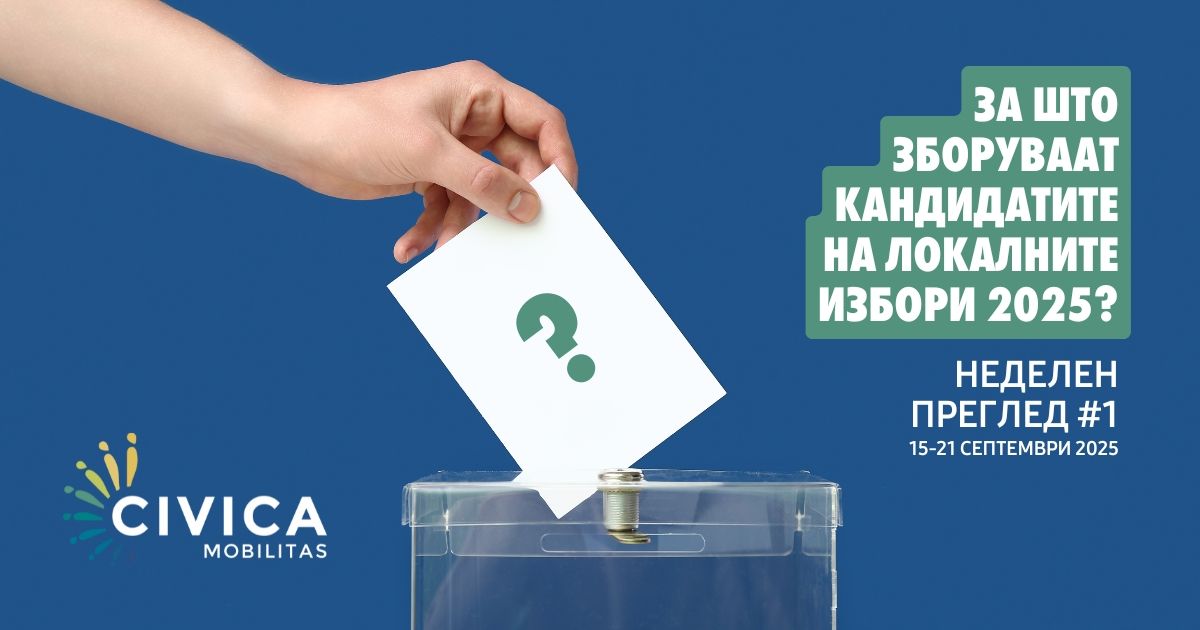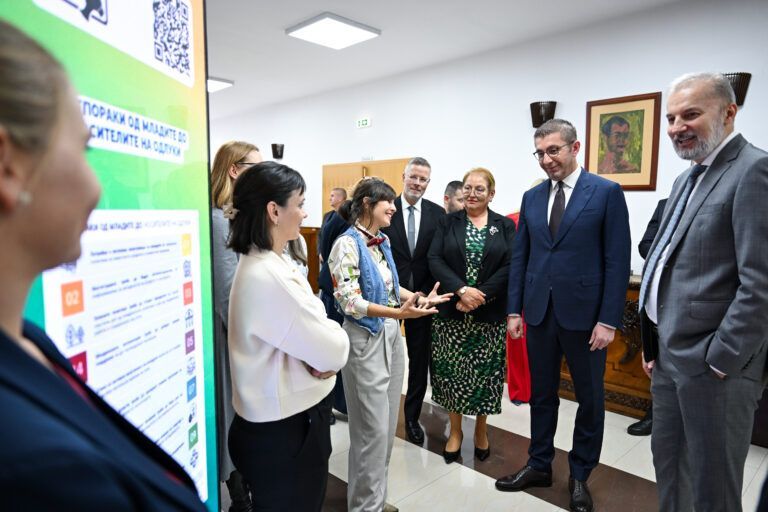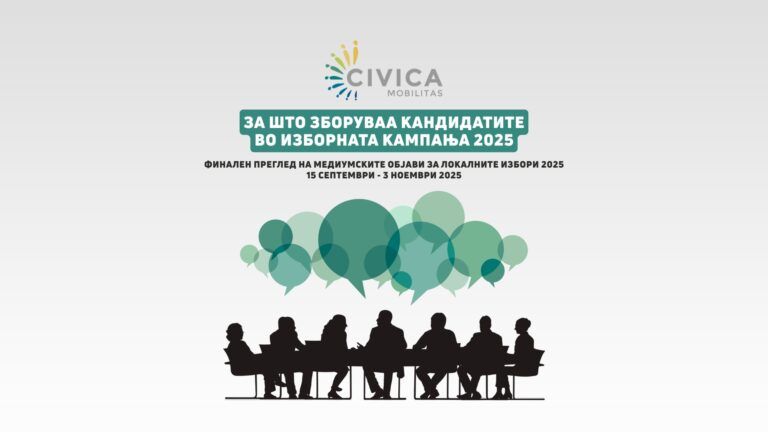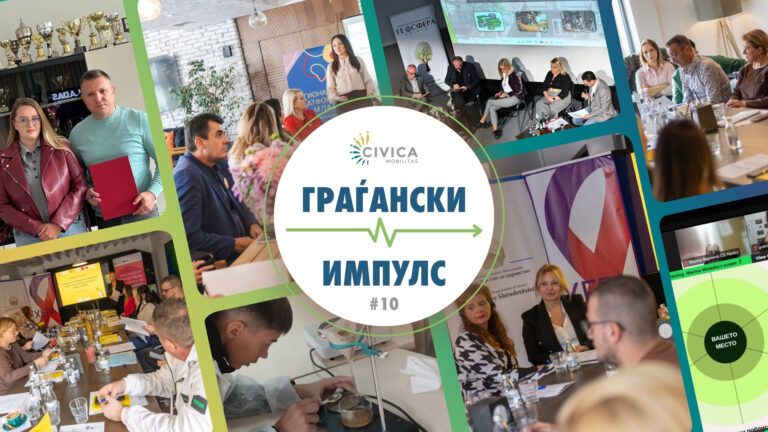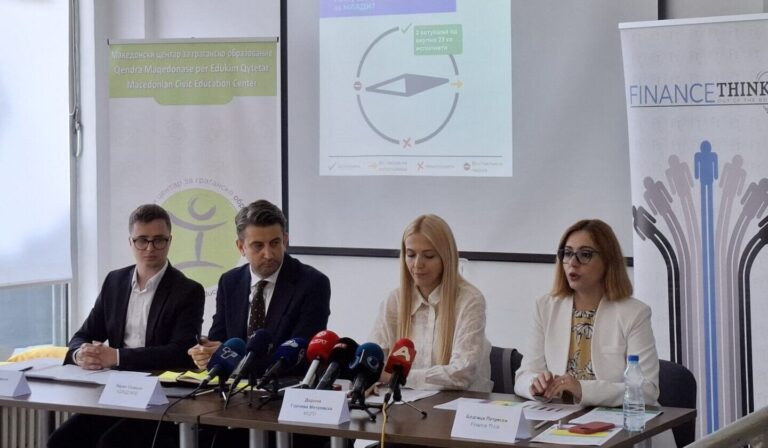What Do the 2025 Local Elections Candidates Talk About? #1
WEEKLY OVERVIEW #1 (15TH-21ST SEPTEMBER 2025)
The public discourse analysis reveals three different communication strategies that the candidates apply to shape their public presentation. Each of these strategies has a different weight and generates different response by the citizens.
The first approach is based on the current environmental challenges. The candidates that follow this direction use the everyday environmental problems – such as air quality, waste management and greenery preservation – as a central point of their campaigns. They stress the direct connections between the environmental situation and the daily life of the citizens, presenting the environmental issues as urgent and relevant for the local community.
The second approach is focused on direct services and improvements that the citizens can see and feel. This approach includes topics such as the situation in the schools, traffic safety, accessibility of health care protection and public infrastructure maintenance. The candidates that communicate in this way position themselves as practical problem solvers, focused on specific results that directly influence the quality of life.
The third approach combines a vision for sustainable development with specific economic benefits. This profile stresses the advantages of the renewable energy sources, energy efficiency and green technologies not only as environmentally responsible solutions, but also as ways to economic progress and creation of new jobs. The candidates that follow this direction try to position themselves as careers of progressive and economically viable solutions for their communities.
These different approaches do not only reflect the priorities of the candidates, but they also indicate various segments of the votes that impose their expectations in the public discourse.
What really moves the citizens?
The data clearly indicate that the citizens react to someone being specific and direct. The messages that offer specific solutions to specific problems with clearly defines deadlines consistently generate more engagement. This applies even to candidates with less media presence, which shows that the quality of the message is more important than the quantity of the posts.
What happens with the civil society topics?
Although the thematic coverage is quite broad, two key topics remain at the margins: financing of the civil sector and transparency issues. The low level of discussion on these topics implies that there is a possibility for their proactive inclusion in the public discourse, especially by connecting them with specific local services and decisions.
Where does the discussion happen?
It is interesting that there is a clear lack of connection between the activities of the candidates and the response of the citizens. While some other platform are more popular with the candidates when it comes to posts, it is the short visual contents on TikTok that have shown best effectiveness in public engagement, with an average of four times bigger engagement after the post compared to Facebook and Instagram.
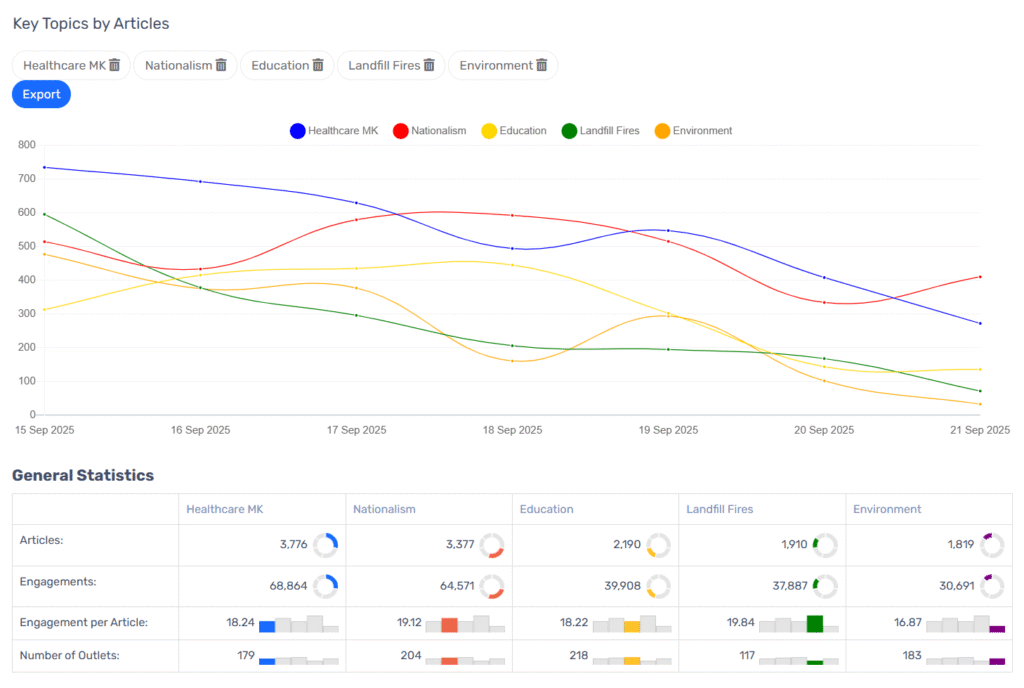
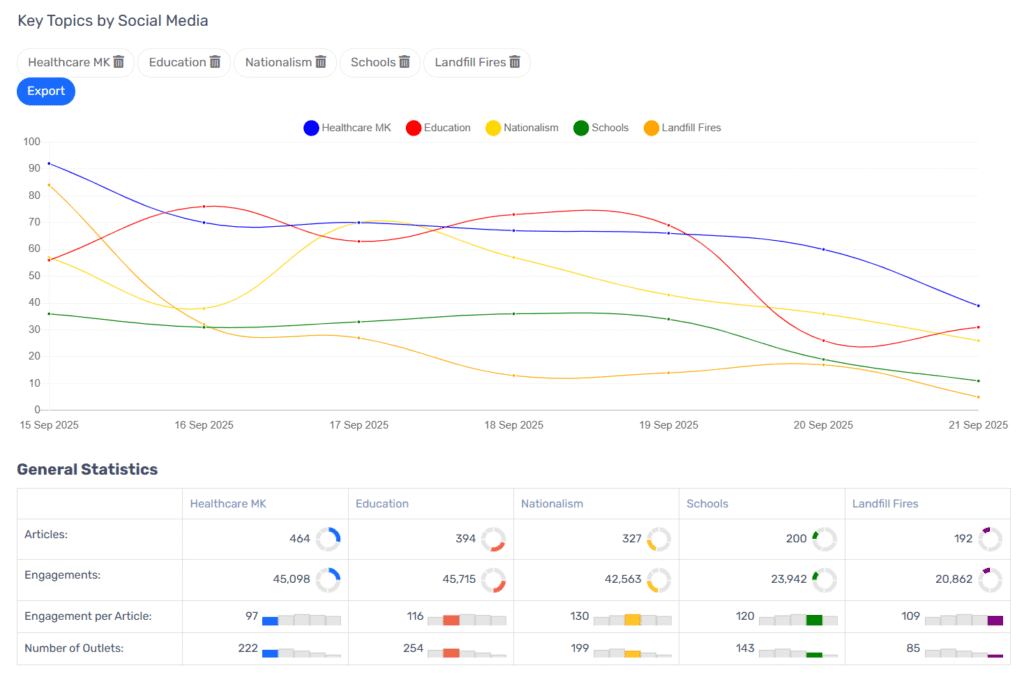
The graphs show the key topics after media and social network posts. Please take into consideration that during the processing for the purpose of this presentation all posts per topic have been covered, rather than only the ones that have been communicated by the participants in the local elections and for the needs of the election campaign.
Methodology
This weekly overview has been compiled based on the data collected and analysed from Pikasa Analytics platform. The methodology includes automatic monitoring and analysis of thousands of contents from on-line media and social networks, which provides a precise and comprehensive insight into the public discourse and media coverage trends.
Civica Mobilitas is a project of the Swiss Government implemented by MCIC., NIRAS from Denmark and FCG from Sweden. The opinions and views expressed in this article do not reflect the views of the Swiss Government.


